Last Updated on December 19, 2012 by stevehoggbikefitting.com
Please note: This post isn’t necessarily an endorsement of any products, what works for Steve may not work for you.
Pick and Stick. It’s a term Steve wrote about a couple months back meaning if you find something in your life worth keeping, don’t let it go. Great friendships last and a great bike should last, too. Perhaps the end of the Steve’s post left you wondering what type of bike Steve rode?
Near the conclusion of his rant, Steve said, “Well this (the post) isn’t about bikes but since I’ve raised the subject, buy a steel or titanium frame because they are real, not plastic, and properly designed and cared for, will give an unparalleled cycling experience for many years. Pick and stick.”
So, what does Steve ride?
Currently, Steve owns six bikes: an SH equip (Steve’s house brand) custom steel single-speed, an SH equip custom carbon, an old custom Teschner aluminium, a custom Baum Ristretto steel, an 18-year-old Trek mountain bike, and his most recent bike and the one we’ll focus on today, a Seven Axiom SL.
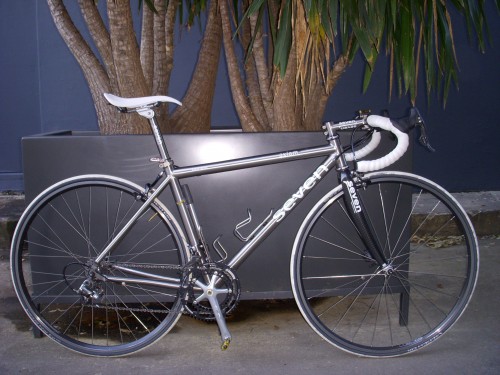
The Axiom SL is a custom double-butted titanium (Ti) frame offered by Seven Cycles. The butting process of a frame makes it lighter than a non-butted one and can change the ride quality. The difference in ride quality of a non-butted (straight-gauge Ti) frame and a butted frame may be best clarified by Karl Borne, Seven’s service manager:
“This (comparing ride quality) is more difficult because it isn’t something that can be easily measured. Using butted tubes, we can get a little bit greater performance, and a little more compliance, without sacrificing anything but the depth of your wallet. Comparing the two bikes head to head, the Axiom SL (versus the non-butted Axiom S) will likely feel a little livelier, a little more snappy, a little more comfortable.
“Defining little is nearly impossible. I doubt you would even notice it on a ride around the block, but comparing the two head to head for a month, or a long ride, I think you would feel it.”
According to Steve, the ride quality of his bike stands out. “I have owned a lot of frames over 37 years of cycling. Four have really stood out; my steel Baum Ristretto, a steel Paino that I no longer own, my current steel single speed, with the Seven being probably the pick of them.”
A Ti bike may cost a little more than than some of today’s more popular carbon frames, but if they are of Seven’s quality, the purchase reflects a lifetime investment. It’s a custom frame built by hand to your specifications and riding style.
And, since Steve considered his purchase of a Seven frameset to be his last for many years, he not only wanted it butted, he also wanted to finish the build with parts that would be equal to the task. “Post, stem and headset aside, the bits aren’t the latest. I pulled them off one of my older bikes, but I’ll keep them until they wear out,” said Steve. The beautiful seatpost and stem are also made from Ti by Seven along with a headset made by the unparallelled Chris King. Continuing the Ti theme, the bidon cages are made by King Cage.
To help finish it off, he chose handlebars and a saddle that fit him well, the 3T Ergosum aluminium and a reupholstered SMP Composit, respectively. The wheels he built himself some years ago with Velocity Aerohead 2 rims with an off-centre rear both laced to older-style American Classic hubs with Sapim CX-Ray spokes (32-hole rear, 24-hole front). The tyres are normally Michelin Pro Optimum front / rear specific, 700c x 25mm. The pedals he depends on for fit and quality are Speedplay Zeros with the 1/8″ shorter than the standard stainless axles option. Last, but certainly not least, the component group is Italian class, an older 10-speed Record group by Campagnolo.
Looking at the picture of the complete bike above, you may think Steve is a short bloke with a very long torso, but regular readers of the blog probably know why his bike looks a little odd.
However, before getting into the geometry of Steve’s current bike, a quick look through history is in order. Steve probably has enough physical elements to fill a good-sized medical journal from playing Rugby League and sundry other misadventures. However, he practices what he preaches when it comes to stretching, and it is that level of flexibility which allows him to hold a long, low position on the bike with ease. Looking at the fit diagram below of Steve’s Baum, for a man with a height and weight of 5’11” / 1.82 m and 165lbs / 75kg and average proportions, notice the long top tube and stem with a 11cm bar drop. (Note: The seat is pointing down because it is an SMP.)
Now, let’s look at the geometry of his Seven in the picture below. The top tube, stem and bar drop are the same or similar to that of the Baum; however, look at the measurement of the seat tube.
Over a 3cm difference! Why? Did Steve’s legs suddenly get shorter between bikes? If you’ve read Steve’s most popular blog post, POWER TO THE PEDAL – CLEAT POSITION, you know one of Steve’s three general recommendations for cleat position is midfoot. Steve knows midfoot isn’t for everyone, but on a personal level he’s been a fan almost since he first tried it:
“Gotz Heine contacted me some years ago about something I had written, and we started a correspondence. He explained his ideas and rationale in regards to midfoot well, so I decided to try it. The first ride was a disaster because as I now know, I hadn’t lowered my seat enough. I changed back to my normal position and shoes and despite only having ridden 30kms on midfoot, my normal bike felt like it belonged to someone else. It took 80kms to feel ‘normal’ again. My thinking was that if a one hour ride on midfoot could totally disrupt embedded motor patterns many years in the making, then it needed further investigation.
“Why do I stick with it? I can keep up with people that I can’t normally keep up with using a forefoot cleat position. I’m in my mid-50’s and train sporadically, so any help is welcome!”
If you haven’t guessed by know, Steve designed his Seven to take advantage of the benefits of a midfoot-cleat position hence the lower seat tube and head tube and longer front centre.
Now you know what Steve rides, what do you ride? Similar to Steve, I ride a custom Seven Alaris which is now called the Seven Axiom S. It’s dressed with SRAM components, Hed Ardennes wheels, a Seven aluminum stem, a SMP Dynamic saddle, FSA Wing Compact bars, Thomson Elite seatpost, Speedplay Zeros and, of course, a Chris King headset.
– Jason (Steve’s web guy)
Further down in the Comments you will see a request from Mircea for pics of Steve on the Seven. There are three below at differing intensities of riding. The chain is on the small ring with more resistance programmed from the Sidea SB4 trainer for the harder efforts. How does he look?
Steve would say “unremarkable”.
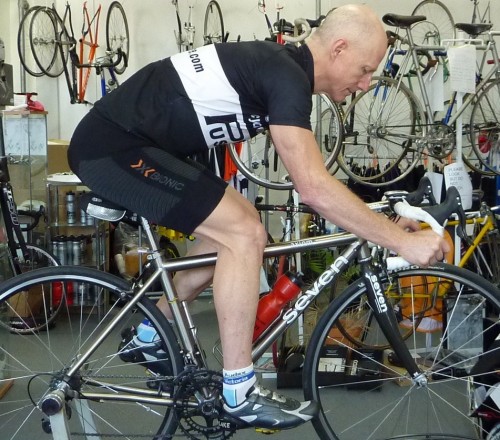
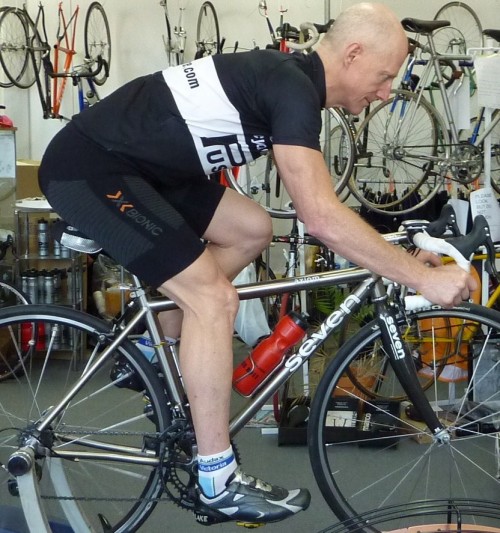
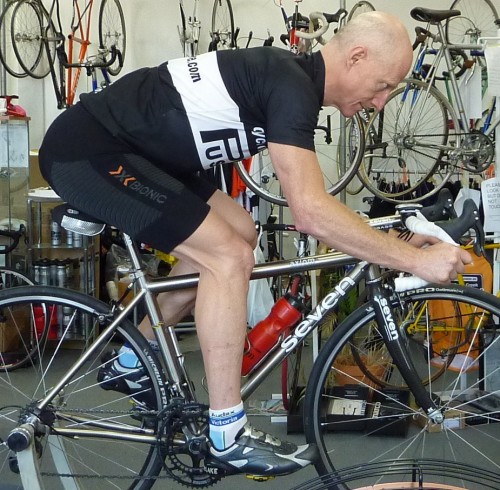
Special offer: Use the coupon code Seven and receive Steve’s newest eBook, “Tales From a Real Bike Shop,” for only $7!
Note: Often, more specific answers to your questions can be found in the Comments below or in the eBooks section and FAQ page.
To learn more about bike fit products offered by Steve, click here.
Do you have a bike fit success story? Please go here to share.
Thank you for reading, return to the Blog page here or please comment below.Comments (60)
Comments are closed.

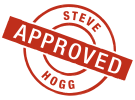
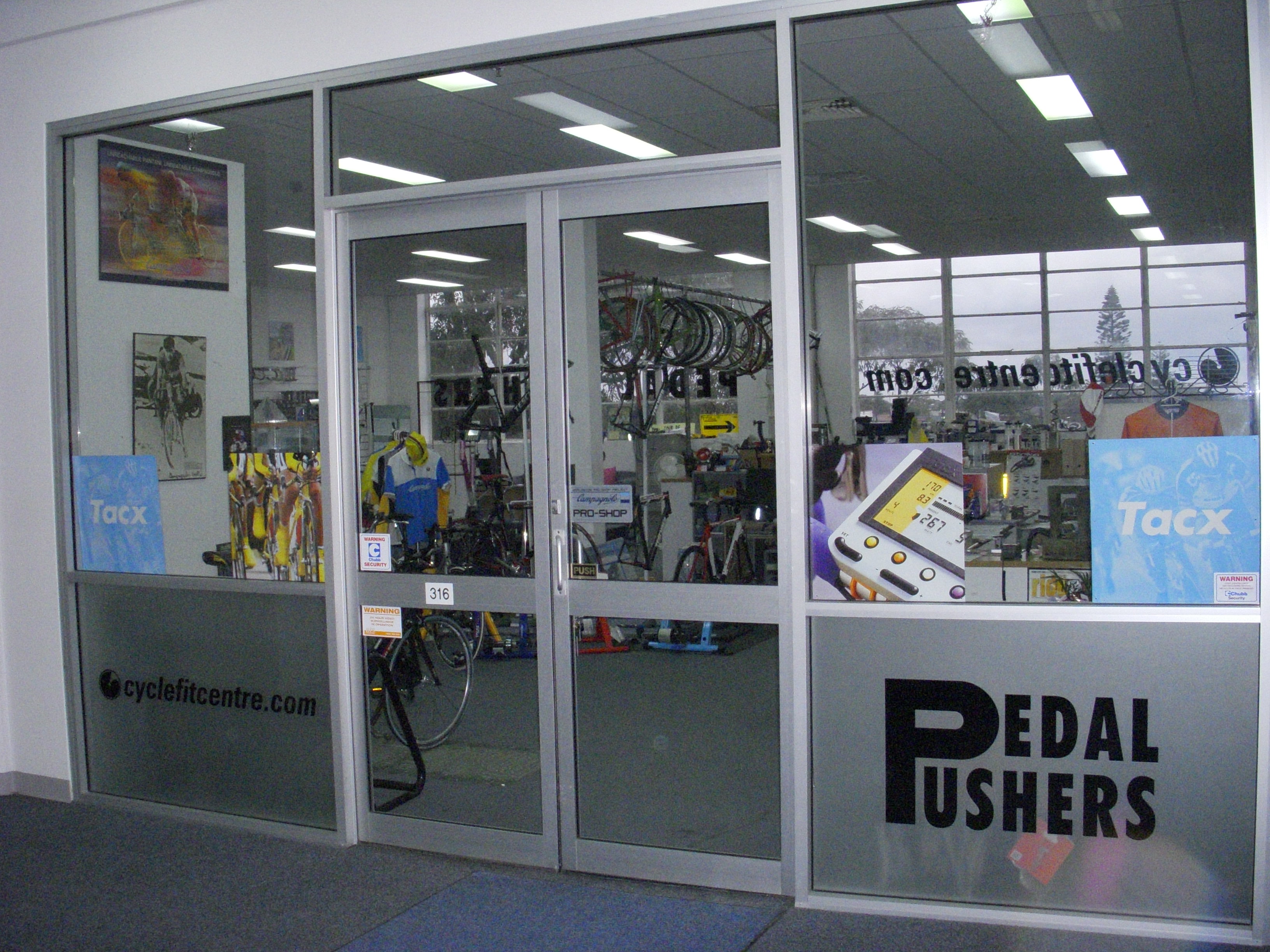
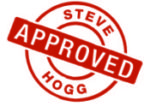
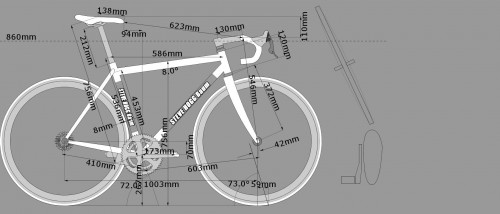
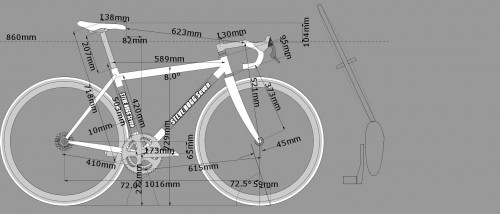


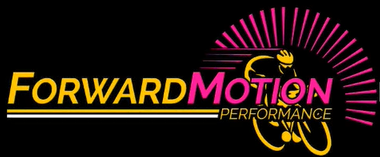
I’ve got 4 bikes. 1 mountain bike and 2 road bikes as well as a TT bike. 3 of them are Cannondales with the exception a Gellie Custom road bike made from columbus life steel tubing fitted with S&S couplings,Sram Force groupset and some custom built wheels using mavic open pro rims and dura-ace hubs. I reckon I’ll own the Gellie for life.
I’ve also got a Gellie Custom road bike, built with a combo of Columbus Life and Spirit, and love it to death. Baum get a lot of good press (and I’m sure rightly so), but there are a number of excellent frame builders about, and Ewen Gellie is definitely one of them.
Yes, I’ve met Ewen and apart from being a good bloke, he is infatuated with frame building which is a good thing in a frame builder!
Since you asked, I will start: my 2009 Baum Romano Ti was designed by Steve in ~mid-2009 and delivered ~5 months later in late Nov 2009. Good things take time!! It’s a staight-gauge, i.e. non-butted, Ti. It’s ride is great, at least up to 4-5 hours – I don’t ride more than ~5 hours at a time. I dont regret not spending more money on the butted-Ti Baum and I like the extra strength of the straight-gauge Ti tubes. The forks are Wound-Up road carbon, wheels are 32-spoke Mavic OpenPro rims front and rear, brass spoke nipples, DT Swiss butted spokes, Ultegra hubs front and rear. Bars are 3T Ergonova Pro aluminium and stem is 100mm 3T Arx-Pro aluminium. Groupset is Ultegra-2010 model with 53/39 and 11-28. Pedals are Speedplay Zero stainless-steel with aluminium fore/aft extenders to get the cleats far back. Seat-post is Thomson Elite (kinked, =15mm setback), seat is SMP Dynamic (SMP Stratos before that). THANKS go to Steve and the gents at Baum in Geelong. I don’t need 6 bikes when I have one like mine. This bike cures the N+1 problem, for good. I might be getting compact 50/34 front rings soon to help me ‘cheat’ on Arthur’s Seat.
For those who don’t know what a Baum is, they are one of the most beautifully finished Ti frames you will ever see. http://www.baumcycles.com/
G’day Steve, Jason,
so, almost zero (no) changes about body placement when switching from standard to midfoot. i mean the relation saddle – bar is quite the same… good to know that 😉
wow, (for 1.82m) a veeery long horizontal toptube + a long stem… “flexibility” is the word, isn’t?!
great bikes! and so cool to be able to have a custom ones…
ciao,
Mircea
G’day Mircea,
When changing to midfoot, most riders find that they
cannot drop their bars as much as they drop their seats. The reason I dropped my bars as far as the seat is that my flexibility has increased over the last 5 or so years because I stretch regularly. Yes long top tube and stem, but on the bike I look unremarkable and am not over reaching to the bars at all. I have ridden 200+ kms in that position without trouble on 8 -10 occasions.
I predominantly ride one bike which is a custom Seven Axiom SG (now the Axiom SL). This bike was designed to accommodate my poor flexibility but allow for improvement in my performance and physical condition. The bike is equipped with a Seven fork, Chris King headset, FSA stem and K-Force compact carbon handlebar, Speedplay Zero pedals, Thomson Masterpiece seat post, Selle SMP Lite 209 saddle, Mavic Open Pro wheels, and Campy Record 11-speed drivetrain (compact gearing).
BTW, great blog Steve. If it wasn’t for your writings on Cyclingnews.com I would probably have given up riding years ago.
Bob (Philadelphia, PA)
G’day Bob,
I like that you’re riding on conventional wheels. I think
there is too much focus on pre built wheels these days when handbuilt wheels still have much to offer.
You mention that Steve practices what he preaches in stretching. Would it be possible for Steve to outline what type of stretching he does? How often?
Steve may reply himself, but from what I know, he subscribes to using many of the stretches in the “The Flexibility for Cyclists” ebook available in the store. And, I believe he recommends long, mild stretching after warming-up about three times a week opposed to short, harder stretching. You want to train your muscles to be longer over time…
G’day AP,
Yes, happy to do that. I used to stretch a lot in my 20’s but got lazy. I’ve done some stupid things at times in my life and have had some severe injuries. Multiple fractures in the right foot including talus and calcaneus. Lateral and collateral ligaments of the right ankle torn off the bone 3 times. No posterior cruciate or medial ligaments in left knee, multiple shoulder dislocations, wrist dislocations and fractures, broken sternum with xiphoid process pointing in, 12 compression fractures of the spine, major nerve damage and muscular atrophy in my left side middle and upper back from surgery to remove half a lung, and a whole lot of other stuff including multiple facial fractures and a left temparomandibular joint (jaw) that is shot. Through my 30’s and early 40’s I worked and trained very hard and didn’t stretch. By the time I was 43 or 44, lack of stretching and the injuries I’ve had meant that I was in pain 24 hours a day; not always low level pain either. I tell you this so that you know that I am not a naturally flexible, injury free person.
I took up Astanga Yoga for 5 years and while I still rode, yoga was the priority. That 5 years changed my life in a functional and comfort sense. These days I don’t go to yoga, but use the stretching regime from a book called “Flexibility for Cyclists” by Fred and Kele McDaniel. It is available as a $10 download in our store and will be available again in hard copy soon. I have found that routine to be the most time efficient for me that I have come across. To that routine I add an upper back back stretch, and some neck stretches that I’ve found that I need to do.
Frequency?
Every Wednesday morning post ride and on Saturday or Sunday mornings or both, post ride. A bad week for me is once a week, a good week is 3 times with the average being twice a week. On a personal level I find that more than that is counterproductive. Each session lasts from 40 to 90 minutes depending on how much time I have and how long I hold each stretch.
Other advice?
Never stretch in the a.m unless you are warm from activity. Afternoons and evenings are fine though. Don’t stretch hard but hold the stretches for a reasonable time. From 30 – 90 seconds, gently feeling a mild pull in the area being stretched. Stretch in a quiet room without distractions so you can think about and feel what you are doing. Stretching should be the most relaxing time you spend out of bed.
If I can be flexible, and I am, then anyone can be if they are prepared to make the time available and then do the hard part; stretch easy NOT hard.
I had to take some ibuprofen after reading this…
I’m glad to see that 11cm of drop works for you. I’m currently at 115 and have been afraid to try a lower position because I was worried that maybe I was openly interpreting my flexibility to be a bit more on the limber side than it is. My elbows are often very bent when riding, so I wanted to try a lower stem position, but thought it would be weird since I’m 6 foot 1, riding a 56cm frame with a 170mm headtube, and already riding a -8 stem slammed to the top of the headset. A -17 would give me 130mm of saddle to bar drop, but straighter elbows and allow me to use my preferred low and aggressive pseudo TT position in longer efforts.
G’day Karsten,
With very flexible people the major limiting factor
towards achieving a low bar height is pelvic stability. Usually the first signs that the bars are too low is an inability to sit squarely on the seat; not the neck and upper back issues that tend to plague less flexible people who sit too low. If you can sit lower with out challenging your on seat pelvic symmetry, do so. If you can’t, don’t.
The other thing is not to confuse a low position at the front with more a aerodynamic position as it isn’t. Yesterday I fitted a rider who has spent a lot of time in wind tunnels and she confirmed that when experimenting in a tunnel, front end height had almost zero impact on drag coefficient. What had a positive impact was extension of the torso and arms as far as comfort allowed. What you should be looking for is the greatest torso extension you can comfortably maintain. If that means lower, then fine. If it just means a longer stem at the same height, then also fine. Let comfort be your guide.
In my case, because I’ve had some severe back injuries and surgery, the more my spine is extended (within reason) the better it likes it.
Any quick pointers on the most common pelvic instability issues so I have a guide of things to watch out for while experimenting? I’m suffering none at the moment and my front end feels cramped so I am going to experiment with longer and lower options in the next few days. I notice that I end up with approximately the same back angle, but that bar height seems to have more to do with how locked out my elbows are and what percentage of time I spend in the drops or on the hoods.
G’day Karsten,
Usually the early warning sign is a heightened sense that one leg is stronger or more fluent than the other.
Howdy from Austin Steve. So nice to see a detailed view of your Seven. Paolo, also does well with a longer saddle to bar length to keep his spondy vertebrae from hitting one another. Flexibility is they key component to getting the most quality mileage. Thanks for all of your time and effort to educate the masses about how a body relates to a bicycle.
Jerry Gerlich
G’day Jerry,
This post is Jason’s idea. He thinks people will be
interested and I’m sceptical but I suppose we’ll find out. Yes spondolythesis responds well to thoracic and lumbar extension. You didn’t say anything about your bike. What Pinarello are you riding these days.
Howdy Steve,
I am currently riding a 57.5cm Paris Carbon with a 110 stem at 110mm of drop. The 11 speed Campag levers feel awesome although a bit longer than the 10 speed version. I went back to 175mm cranks as the knee is well and the leverage feels good. The Salsa Dos-Niner ATB with a Rohloff 14 speed internal rear hub has been my recent play toy. The 29″ wheels at 36 psi let me throw all technique out the window and just plain run over stuff. That would have been a good beast to have when attacking the streets of Sydney with you and Geoff.
G’day Jerry,
Geoff and I aren’t hardcore. Only bitumen and concrete here.
a related possible future topic for Steve (in case you are running out of ideas! which is not likely, i suspect)….. talk about road frame geometries – your opinions on what the current off-the-shelf “stock” frames do offer most riders (angles, tube lengths, profiles, etc) and everything else about road bicycle frame and fork geometries you like to get out in the open. Cover things like men-specific issues and women-specific issues and how to address those issues when shopping for a “stock” frame – many people want to ride but can not easily afford a custom Ti/Steel that is built-to-measure.
G’day Yuri,
I’ll eventually get around to something like that but there is
not that much choice out there. Various brands of production frame geometries are moving closer and closer to each other every decade. There is not as much difference from brand to brand as people think. Additionally, ALL mass manufacturers take the same short cuts to reduce unit cost, so again, not as much difference as people think. In some ways the situation has improved over the last 10 years and in some ways it is worse.
I have 4 bikes that I mainly ride
ROAD
Moots Compact – I have had this bike for about 3 years now and have absolutely no plans to change it.
MTB
Blacksheep Highlight ti custom 29er hardtail (another keeper)
Santa Cruz Tallboy 29er dual suspension (my 24hr solo race and fun bike)
TRACK
Giant Omnium. Completely stock apart from some additional chainrings.
Steve,
Does the diagram read 173mm cranks? Or am I just seeing things. Also what is your take on fitting someone who is seems to be in between frame sizes. Say for instance they could probably ride a 56 or 58. Do you prefer to put them on the smaller frame or the larger one? Or is it just a personal preference. Thanks
G’day James,
You read correctly but my cranks are 172.5mm. If I use a
decimal point my CAD program places a decimal in every other dimension (with the exception of seat tube and head tube angles) on the pic and the drawing becomes cluttered.
Re the in between frame sizes; if the bike is for racing I would make sure that there is the minimum number of head set spacers to minimise steerer tube flex. That may mean the larger frame, it may mean the smaller frame with an upturned stem. For recreational riding I would attempt to choose the best balance between minimising head set spacers and still having a reasonable length stem. There are no hard and fast rules, and as you suggest, a lot comes down to individual preference and requirements.
Thanks for clearing that up, thought for a moment you had some secret custom cranks you weren’t telling anyone about. ; ) I was wondering about the frame sizing because I currently have about 2 cm of spacers under my stem and am worried might be a little too much. It is a aluminum steertube though. Ive ridden the next size frame up (58) and just do not like the handling characteristics as much as the smaller frame (56).
G’day James,
Once upon a time I did have a pair of 173mm Magic Motorcycle cranks before they sold their designs to Cannondale but that is a long story.
Re your question. If the 56cm feels better go with that. I doubt that 20mm of spacers under the stem on an aluminium steerer tube will feel anything other than really solid. If I’m wrong flip the stem and use less spacers.
Servus Steve,
very nice bike indeed! Thanks for sharing.
If I ever get back to money I will build you a frame similar to what you have – except with 26″ wheels. The difference to ordinary bikes for riders your size is once again fantastic.
Jim Doyle who just recently participated in the Race around Ireland under gruelling conditions wrote: “The bike and wheels (that is 650c / 26″) performed fantastically. Before the start of the race we did a small test on the 26 and 700c wheels to see which would be better with the tail wind. The 26 inch wheel was far faster. At the beginning we took a wrong turn allowing all the other riders to pass as we had started at 5 minute intervals. Within the first 100 miles I had caught and passed all 11 riders. My crew chief kept telling me to slow down as he felt the speed average was far too high. But I was comfortable with a heart rate average of only 142 bpm. The simple fact was the wheels were improving my speed. They descend and corner better than the 404 and better than any wheel that I have owned. This combined with the mid cleat position makes for a very efficient bike.”
You can find a photo of Jim’s bike on http://www.biomac.biz/ti-bullet/ Its the 5th in the row. In fact, 4 out of 6 are 26″ / 650c. The one I have been riding for more than a decade is the very last 700c ( though as with 6ft2 there’s no way). The reason I got into designing 26″ frames started when I had to carry a set of wheels on the back seat of a motor bike and suffered the tremendous effects of wind in the spokes…Its scary the difference between 700c and 650c, to say the least.
G’day Gotz,
It’s not me sharing, it’s Jason’s idea. I’m a bit ambivalent.
For those who don’t know Gotz, he is the originator of midfoot cleat position for performance riding and it was he who introduced me to it. In the next week or two there will be an interview with Gotz posted on the blog.
I’ve often wondered about whether the lesser drag of 650c wheels would offset the slight increase in rolling resistance caused by the smaller tyre and it appears that you experience is that it does…………and some.
Years ago when I used to road test bikes for a magazine I did road test on a 650c wheeled Principia criterium bike and I remember it as being extraordinarily quick when accelerating. Nice to know that the bike industry still has areas to explore. Thanks for the info.
Gotz and Steve,
It would seem that the 650c smaller wheel diamater would help diminish the top overlap that the mid-foot cleat position increases (relative to “traditional” cleat positioning more forward on the foot). Aside from the aerodynamic benefits described above, is the overlap factor part of the motivation for using 650c wheels in Gotz’s frame design for mid-foot cleat usage?
Steve, you worked with Seven to design your frame. Did they have any previous experience adjusting frame dimensions to accomodate mid-foot cleat usage, or did you have to “teach” them? I’d imagine you investigated other custom Ti shops yet chose Seven, was it in part because of their better ability to grasp/ implement the necessary dimensional modifications?
Gotz, are you in the business of providing frame “blueprints” like an architect which could be implemented by a custom Ti shop, or do you only implement your own designs yourself under the Biomac name?
I’m very intrigued by the midfoot position and the concept of having a bike specifically designed for that “style” rather than trying to shoehorn the mid-foot cleat position into a frame which has geometry designed for traditional cleat location.
Thank you,
Doug
PS: I realize Gotz isn’t affiliated with Pedal Pushers, but it’s my hope that he’ll read this post and respond. His Biomac website, being in German, is a little tough for me to navigate.
G’day Doug,
I’ll answer the questions you’ve addressed to me and forward the rest on to Gotz.
Steve, you worked with Seven to design your frame. Did they have any previous experience adjusting frame dimensions to accomodate mid-foot cleat usage, or did you have to “teach” them?
I don’t know whether Seven have designed frames for midfoot cleat position previously or not. I sell Sevens in Australia and the way it works at my end is that I define a position for a rider and then measure that position. I then use CAD software to design a frame underneath that position taking into account the tubing diameters Seven use (which change depending on top tube length) and the 7 options in road fork offset that they have. I supply Seven a drawing and they then build and send me a completed frame that is exactly as I have drawn.
I’d imagine you investigated other custom Ti shops yet chose Seven, was it in part because of their better ability to grasp/ implement the necessary dimensional modifications?
I didn’t investigate anyone else. I had sold quite a few Sevens over the the last 4 years and was impressed with them. Not just the build quality but the little things. 7 different fork offsets in 3mm increments; clearance for 28mm tyres with their standard forks; their willingness to build exactly what I drew up without question – and to date that has included road frames with seat tube angles from 70 – 76 degrees. I get all the ‘unusual’ cases! The other thing is that when I am setting up the position on every Seven I have sold so far, once I get the seat position where it should be and the bar height where it should be with the stem length planned, the the reach to the bars is always what y drawings say it should be plus / minus 1mm which is probably measurement error on my part when using a tape or long rule. I didn’t hear a murmur from Seven when I sent them the ‘unusual’ dimensions for my frame. They just built it.
I’m very intrigued by the midfoot position and the concept of having a bike specifically designed for that “style” rather than trying to shoehorn the mid-foot cleat position into a frame which has geometry designed for traditional cleat location.
In part this depends on how much room you have to play with; that is what top tube length and stem length you need. I’ll let Gotz reply to your design query but if he doesn’t provide drawings, this is one of the services we can provide.
PS: I realize Gotz isn’t affiliated with Pedal Pushers, but it’s my hope that he’ll read this post and respond. His Biomac website, being in German, is a little tough for me to navigate.
I use Windows 7 and Chrome browser. When I look at Gotz site, a tab pops up asking if I want the site translated from German to English. You should be able to do the same somehow.
Hi Doug,
Steve drew my attention to your comment, so here is my answer:
re bio-mxc² Ti bullets
biomac has been designing frames since 2001, but the first 650c Ti frame I constructed was in 2003 for France’s Catherine Marsal (see 3rd picture at: http://www.biomac.biz/ti-bullet/ ). When preparing her for what should have been her comeback at the Sydney Olympics. We were both intrigued by the precision, liveliness and aerodynamics I had caused. Cathy would simply fly on the descents, corner like a devil and sit on her bike as if she had always been one piece of it. A pity that pressure got too much for her, otherwise cycling would have witnessed a fantastic comeback from a fabulous athlete.
Before and after that time I remember I had tried in vain to convince dozens of triathletes of the advantages of smaller front wheels for IRONMAN competition. Even though those who tried would drop everyone as soon as hey went into their aero position couldn’t be bothered. Its like Steve says, industry sets the standards. Everything else is for “conoisseurs only”.
re 650″
This year I designed a 650 for an Ironman pro, Jo Spindler. Jo raced for team TBB (see his bike at: http://www.biomac.biz/ti-bullet/ ). He not only has the brains but also the instruments to follow up my claims, so he compared 650c to 700c in several time trials and insists the difference of just the wheels and the lower position is huge.
re aerodynamics
Although Titanium tubing might be slightly less aero at 60k/h than a windtunnel-designed carbon frame, what counts after 180k is the better legs (for the running split it is) and they are definitely not the result of suspension à la carbon ;-). Too rigid. Jo quickly got the message, so this season saw already team mate like Diana Riesler ( http://www.diana-riesler.com/galerie/cologne226-2011/ ) dominate the bike split riding my bicycle midfoot shoe sole (here you don’t want suspension), 650 frame and wheels.
re measures
Because of me being rather particular when it comes to measures REWEL went down a rough road until they finally got approved. The result is a masterpiece with life-time guarantee which isn’t expensive. I am so cocky to claim that even if an Asian company had the measures they wouldn’t be able to copy them from scratch ;-).
re English version of http://www.biomac.biz
Sorry for the inconvenience. I promise I’m about to feed my webmaster with (rocky) translations of my site’s content. With a little luck you will be able to see all pages with English footnotes by the end of this week, ok?
Thank you, Gotz, for taking the time to respond to my questions. I admire your innovation!
G’day Steve,
a photo with you riding the bike, shooted from the side, would be veeery nice to see 🙂
72 degree seat tube angle, offset seat post, smp-saddle placed on the middle part of the rails; all that means that you sit very further back, a lot of seat setback, right?
ciao,
Mircea
Okay Mircea,
I’ll get something posted. Yes, I sit reasonably far back
but as you will see when I get a pic up, I look unremarkable.
G’day Mircea,
3 pics are at the bottom of the post now.
Hi Steve,
Can you tell us your impressions of the Rotor Q-Rings you seem to be riding there?
When would you recommend them to others?
Cheers,
Elliot
G’day Elliot,
Yes, on a personal level I’m a Q ring fan. It took a long time
though to work out which position best suited me though. I’ve settled on position 4 which seems to be the best all round for a mid foot cleat position.
More widely though, I’ve found most people using Q rings feel they are beneficial with a minority who feel that they performance worse.
Great article Jason & Steve. Steve I also really liked your insight into stretching from the comments.
I bought the stretching book & band on your recommendation a few years ago and it is easy to read and follow the directions. I especially liked your comment that stretching shouldn’t be too painful and that we should hold each stretch for 30 – 90 secs. I know in the past I have probably tried to over stretch ( more pain more gain?) and not hold the stretch for long enough which doesn’t lengthen our muscles as well as your advice.
I feel we all should view stretching as a crucial part of training and not just
an add on that we do when time permits.
G’day Darren,
Does this mean you’re back from Europe?
I echo everything you say Darren. Without regular stretching, I slowly become a painful mess.
Thank you, Darren.
Great stuff here again Steve, I also would like your take on off the shelf bikes and here is a definite question. Do you feel that the head tubes on most off the shelf bikes are too high or too low based on your experience in fitting race specific riders?
G’day Bruce,
Jason deserves the thanks as he wrote it.
Production bikes……………I can fit 95% of my clients to a production frame, providing it is the right one, without massive compromise. That doesn’t include the compromises inherent in all production frames which will be the subject of a post sooner or later. The other 5% NEED a custom frame, with me being one example. I’m Joe Average proportionally (short femurs / long lower legs / short upper arms / long lower arms aside) but for functional reasons cannot find a production frame that fits well even when using forefoot cleat position.
A lot of people want a custom frame but not that many need one; and there is a difference.
Re head tube lengths for those that race. That’s a tough question to give a yes / no type answer too. I don’t know about where you are, but most people who race in this country are Masters / Vets. Often they are not in the first bloom of youth, spend a lot of time behind a desk and don’t stretch much, if at all. This often means that a high head tube frame, an upturned stem or a lot of head set spacers are necessary for a comfortable, performance position. Call it old age and dysfunction. More accurately, call it structural neglect because age doesn’t have a lot to do with function if people do the self maintenance work.
Then I get the young guys and girls who are racing seriously in Cat 1 / 2.
Some of them are really functional and many leave here with no headset spacers or a minus 17 degree stem just to get their bars low enough. However many are the product of the computer age with a childhood spent slumped in a chair in front of a screen and like the older people are posturally dysfunctional and need a higher front end position.
So what I’m taking a long time to say is that manufacturers have got it pretty right with head tube lengths, given that many offer a low head tube height range and a higher head tube height range. There are plenty of individual cases where it is not ideal but for the vast sweep of people, production frames are okay.
Hey Steve,
I’ve recently gotten back into riding the mountain bike in the last month or so after spending a heap of time on the road bike and had a quick question.
Firstly before I get to that, thanks again for the bike fit and taking the time to setup my second set of shoes ahead of the Blayney to Bathurst before I was heading over to France with Merrick for the Etape in the Alps this year.
You’d be pleased to know we both finished and finished well (in the top 15%). I was ecstatic to get through it with no pains, niggles or dramas either in the ride or in the lead up to it. Especially considering I had chronic knee pain only 12-15 months earlier when you set me up on the road bike as you’d remember. I’ve got some photo’s around somewhere of the trip I’ll have to shoot you via email when I find them.
My question is with relation to my MB setup. It firstly has longer cranks (175mm Shimano’s compared with my 172.5 SRAM road cranks). It also runs a triple chainring which I’m thinking is obviously going to throw the q factor out as well. SRAM now make a double mountain bike crankset that eliminates the need to run a triple. I was thinking that with this type of setup (the MB is a trek as well as the road bike) I could get the q factor the same on both bikes yes? The reason is my knee’s get the odd niggle after a long/hard ride and I don’t have any compensation as far as shoe setup goes for my shorter functional right leg.
Cheers,
Ben
G’day Ben,
long time no speak and glad to hear that you’re doing well. Re
the mtb; the crank length will make little difference as it is only a 1.3% increase. A typical mtb triple set crank has a Q factor of 175 – 180mm versus your road bike Q factor of 145 – 147.5mm. The Sram 2 x 10 mtb crank has a Q factor of 156mm and while it won’t be the same as your road bike, with you and with the history of knee problems you’ve had, I think it would be much better than a standard mtb triple crank.
Without touting for biz, it would be a good idea to have me set up your mtb shoes with similar correction to your road shoes. As to shimming of the mtb shoes; if there isn’t enough room to do it properly inside the shoe, there is a gent in North Sydney named Joe the Miller St Cobbler who can remove the sole of the shoe and make up a dense EVA foam build up of the required thickness and insert that between sole and upper. When he’s finished it looks like a factory job.
It would be a good idea to get together to see how much you need though. The more upright torso position of an mtb is less of a challenge to pelvic symmetry than the lower bar position of a road bike and the ideal build up height may be less than I fitted to your road bike.
Hey Steve,
Thanks for the reply, you’ve covered off pretty much what I thought you might as far as what changes I might need to make. I’ve done a 50k XC event this morning with it and they seem okay thus far. I’ll touch base in the next week or so with you at the office.
My cousin is off to see you in a few weeks for a frame fit as well.
Talk soon.
Cheers
Ben
Okay Ben,
I’ll wait to hear from you.
Hi Steve.
From the BLOG entry it looks like you ride Michelin Optimum tyres in 25mm width. If this 25mm width is accurate – can you please share what tyre pressures you use on front tyre and on rear tyre to support your 75kg body weight? I just bought 25mm tyres to replace my 23mm “common width” – on Baum Ti Romano. Also – what was your reason to choose 25mm width over most common 23mm tyre? Thanks!
G’day Yuri,
Yeah, Michelin Pro Optimums in 700c x 25mm. The 25mm is a
nominal measurement only. Like all Michelins they are larger than the nominal size. My Optimums are 27 and a bit mm with 95psi. I ride at 90 – 95psi for my 75kg which is the Michelin recommendation. At that pressure they are fast, grippy and compliant.
Why big fat tyres?
I like them for comfort and performance; fat tyres roll better than skinny ones; and best of all, when inconsiderate #@^R%$% run me through potholes in bunch rides in the dark, my rims don’t get dented.
Hi Steve,
Love your blog. by implementing what I have learned from it I now ride with a smile on my face.
I am 5’8” 150 lbs and currently ride a 54cm frame. I have never felt comfortable on the bike because the frame feels too big for me. I am thinking about upgrading to a 52cm frame but they keep telling me that I need to ride on a 54cm because I will never feel comfortable on a 52cm since the frame will be too small. On the 52cm I will need a longer seat post and stem. Just as an example, I am by no means the quality of rider that a current spanish champion is, but I have the same height as him and he rides on a 52cm.
I know you don’t have the benefit of looking at me or my current bike, but do you have any comments on how should I approach the decision? should I listen to the store fitter? should I follow the current trend in the professional peloton of going with a smaller frame than what convention dictates?
Thanks in advance for your answer.
G’day Dan,
The best advice I have is this. Find a shop that will go the
extra mile to sell you a bike. Have them allow you to set up a 52cm with your seat height and the stem length and bar placement that you want and spend an hour riding it on a trainer at a variety of loads. By the end of that, you should be confirmed in your view or otherwise. Whatever the result you will be clearer about what choice to make.
Don’t worry too much about what the pros ride. Fashion plays just as large a part there as it does in the wider cycling world.
Dan, 30 years ago customers were told that frames should be built the way the upper tube almost touches their crotch when standing over them. Reason for this was the hegemony of Italian bike riders who, although looking big on pictures, had short legs. I remember that first time I got introduced to Gino Bartali I was surprised how short he was. Ernesto Colnago, Italian telaiista next to God is even shorter. Climber Vladimir Panizza even had a 650 front wheel to accomodate his short extremities on a ‘normal’ bike.
During the last 20+ years frame size grew vertically with the rider’s height, none of them complaining about it until the top guns reached 6ft and more so tot weight became a major obstacle in the mountain stages. Frames became so high they lacked stability did you want a bike lightweight and fairly rigid at the same time. For instance Swiss sprinting star Urs Freuler had himself a special construction made which would support his sprinting power, instead Jan Ullrich and Miguel Indurain couldn’t be bothered as they had other tasks to deal with. I’m sure though that personalities like Lance Armstrong would have left nothing undone had they faced such body geometry. When I rode with Jan in South Africa on the occasion to give my shoes a good testing he would ride a size 60 Pinarello frame whereas I sat on a size 53. Mind you, we both share equal height, that is 6ft2″. It turned out that I had to give him my bike as his seat post was frozen and mechanics couldn’t move it.
If you ask for a smaller frame complaining about 52 your local dealer refuses to give you check your inseam and the flexibility of your spine. Should you be able to reach your toes with your fingers at least leave the shop for another one more trained in biomechanics. Instead if you can’t do this exercise listen closely to what the shop owner explains to you, he may have deeper insight seeing you standing right in front of him.
Steve,
Thanks for the reply, I’ll take this advise and go into a shop with confidence to ask for what I want.
G’day Steve,
a video with you riding the bike, shooted from the side, would be an eye opener.
G’day Ycchoy,
I’ll see what I can do but I’ll just look like another
guy on a bike. Nothing earth shattering, that’s for sure.
Steve, I just wanted to put in another vote for a video. ..And say that if you look “unremarkable”, that must make almost everyone else in the cycling world remarkable – remarkably disfunctional!
Cam
Hey Steve,
you are far from looking “unremarkable” on your bike, no flattery. Neither for your age group, nor for other cyclists. Instead you are looking dam fit and hot like a gun. Definitely a man to look out for if it was in a race. Wouldn’t leave anything undone to make you gasping for air after your bottle is empty ;-). Congratulations!
G’day Gotz,
I didn’t think I looked that good!. Yeah, reasonably fit and
training at the moment for a 24 hour mtb race. I got talked into it by some young guys. I’ll see how I go on my 18 year old hard tail.
Good luck with that 24 hr MTB race Steve!